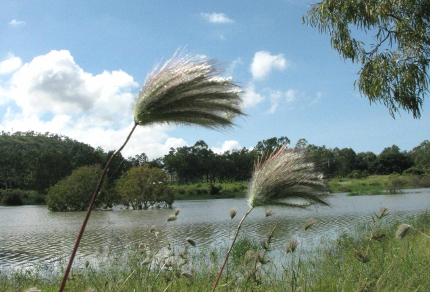First off, the answers to yesterday’s black-and-white bird quiz are as follows: A. Magpie Goose; B. White-breasted Woodswallow; C. Australian Pelican; D. Australian White Ibis; E. Australian Magpie.
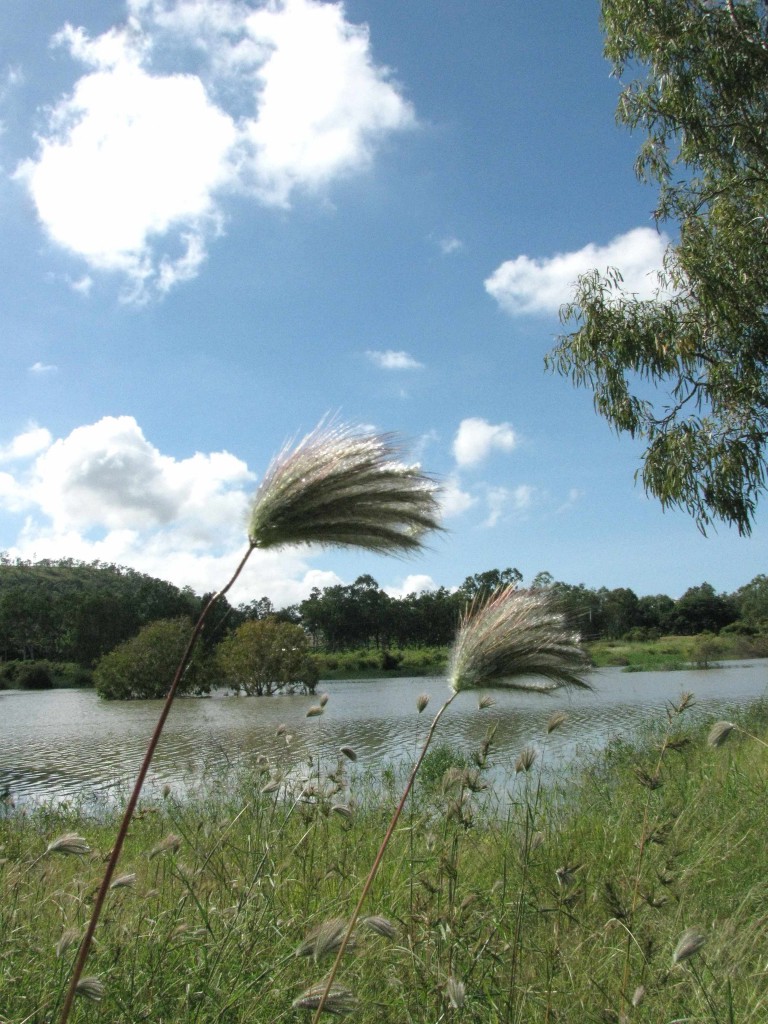
Borrow Pits, Townsville (© Vilis Nams)
This morning, while Vilis and I drove under sharp blue skies to Borrow Pits in the Townsville suburb of Kelso, we heard on the ABC that efforts are underway to remove the remaining fuel oil from a Chinese coal carrier that ran aground on the Great Barrier Reef a week ago. According to the report, the Shen Neng 1 was off-course when it grounded on the Douglas Shoals and subsequently leaked several tonnes of fuel oil into reef waters. Thankfully, the weather has been fair, with no tropical cyclone ripping its way up the coast to complicate the situation.
We parked in Ross Park and, having spotted the shallow Borrow Pits lake across Riverway Drive, crossed the road and walked through a dew-hung meadow to a shelter where we supposed there would be a track. We did find a trail overgrown by a lush profusion of meadow plants, through which we thrashed for a hundred metres, soaking our pant legs with dew and being pricked by thorny shrubs and plastered with spider webs in the process. On reaching a deep, water-filled ditch, we abandoned that trail and drove around to the far side of the wetland to search for the pleasant birding track we’d read about in the City Update1 newsletter (when I re-read the article later, I realized it said plans for trails). In the end, we found an open track, and the joke was on us because the trail was clear and mostly gravelled all the way around the water except for that sopping wet, overgrown stretch that we’d fought through, plus a bit on the far side of the ditch.
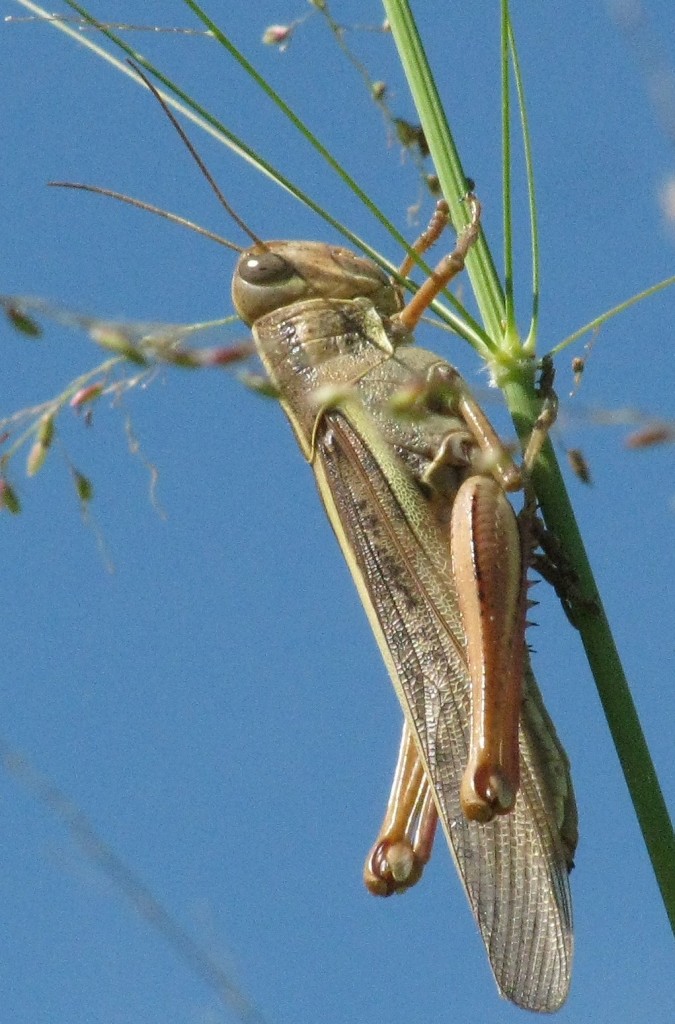
Extra-large Grasshopper at Borrow Pits (© Vilis Nams)
We’d gone to Borrow Pits seeking birds, but it was insects that filled the meadows with life. Grasshoppers – small, medium, large, and extra-large in size – propelled themselves in long, arcing hops or burst into flight. The largest ones lifted vertically into the air, like helicopters, before zooming horizontally to new perches on the stalks of tall, blooming grasses. Some of those mega-hoppers were almost 3 inches in length and fooled me into thinking I’d caught a glimpse of a bird, until I realized what I’d seen was another sun-gilded grasshopper. A selection of the orthopterans were bright green, while others were rusty brown, pale green, or almost grey. Vilis and I became more proficient at spotting them clinging motionless to grass stem, and I wondered at the absence of grasshopper-hunting birds.
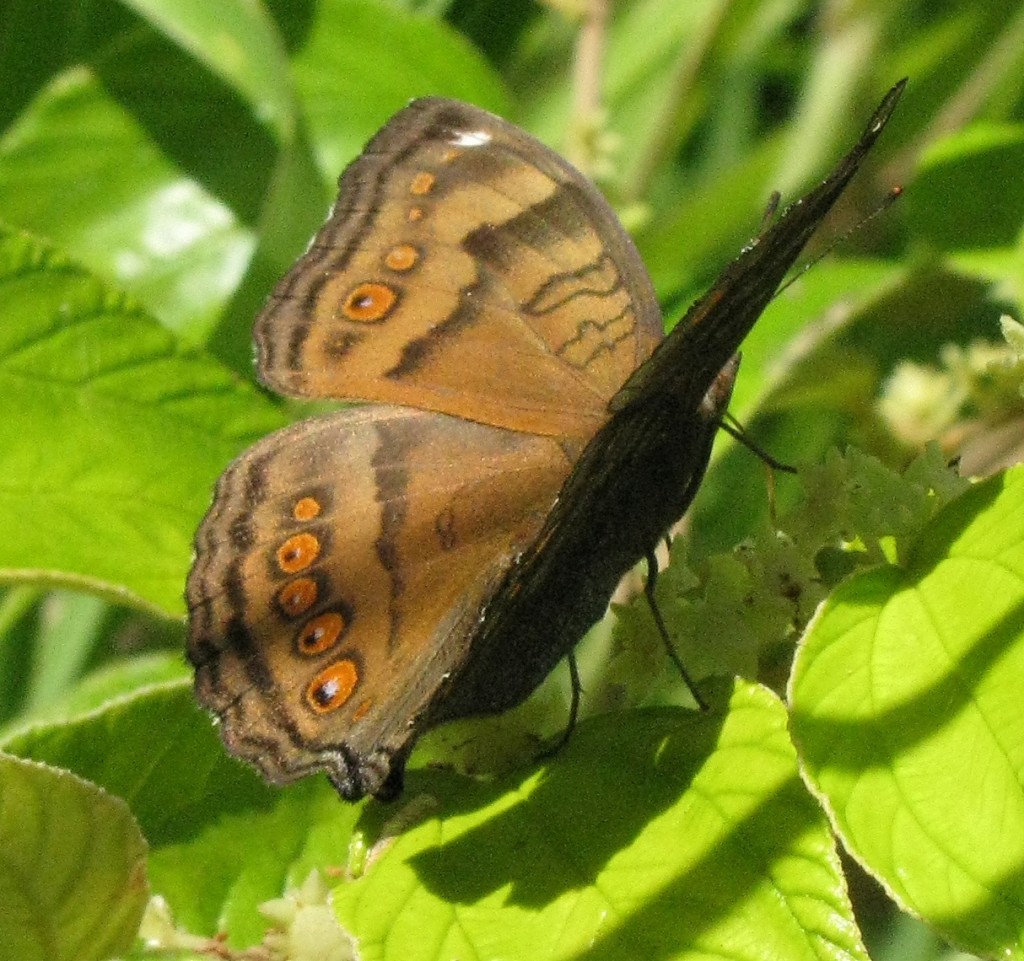
Chocolate Argus (© Vilis Nams)
Butterflies, too, appeared to be temporarily safe from aerial predators, a multitiude of them fluttering unattacked above the densely-vegetated meadows and pausing to rest on shrubs growing among the grasses and herbs. I recognized grass-yellows and clear-winged swallowtails, and noted numerous dark cinnamon-brown butterflies speeding erratically from shrub to shrub, their upper wing surfaces decorated with dark brown markings and ringed ‘eyes.’
Vilis and I caught glimpses of other butterflies, too – a large, pale yellow floater, a small black butterfly salted with white spots, and one beauty that was like the most stunning gift ever received in a plainly-decorated package. When its wings were closed, it was all shades of pale brown and white, blending in with the gravel on which it had landed. But when it opened its wings, it became a glorious cloak of black velvet touched with shimmering purple-blue that surrounded large white spots. Again and again, this creature of two worlds landed and flew, touching down on gravel, a bench, or the leaves of a particular shrub at the edge of the woods, before winging in slow, circuitous paths that repeatedly brought it back to us. Once, it landed on Vilis’s shirt sleeve, and several times on the wet pant-legs of my jeans. The first time I saw those glorious black wings on my leg, I felt I’d been touched by a piece of heaven.
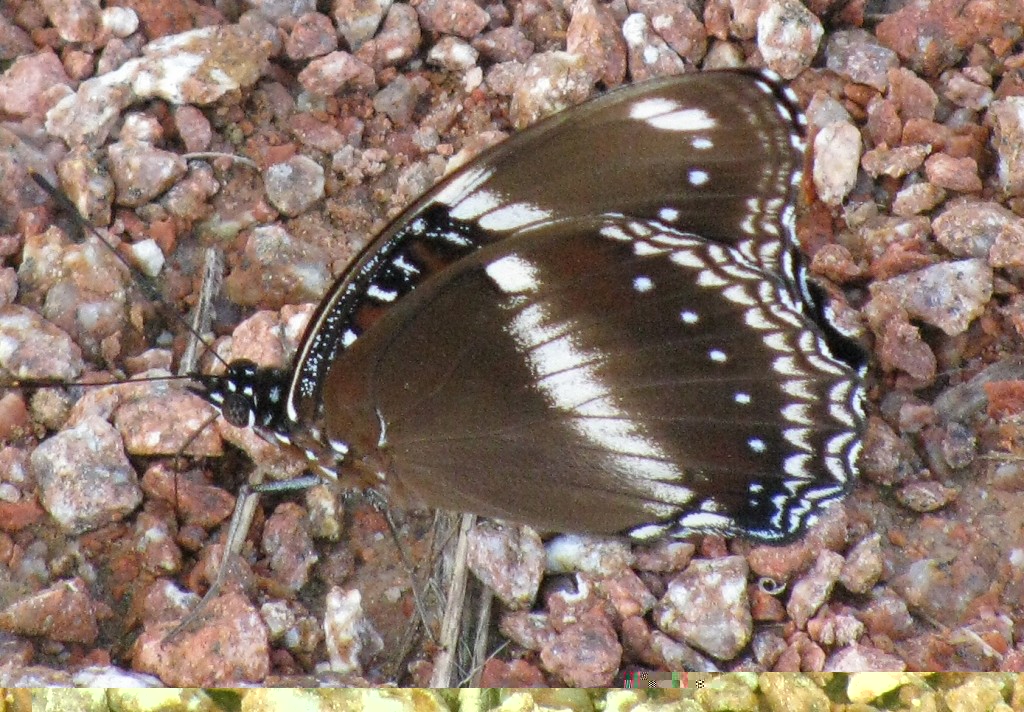
Male Varied Eggfly with Wings Closed (© Magi Nams)
Later, I visited the field guide section at Mary Who? Bookshop and purchased a copy of Michael F. Braby’s The Complete Field Guide to Butterflies of Australia.2 In it, found the quick-flying brown butterfly marked with eyes and learned that it was a chocolate argus. The beauty that had rested on my leg was a male varied eggfly, its name so much plainer than its exquisite reality.
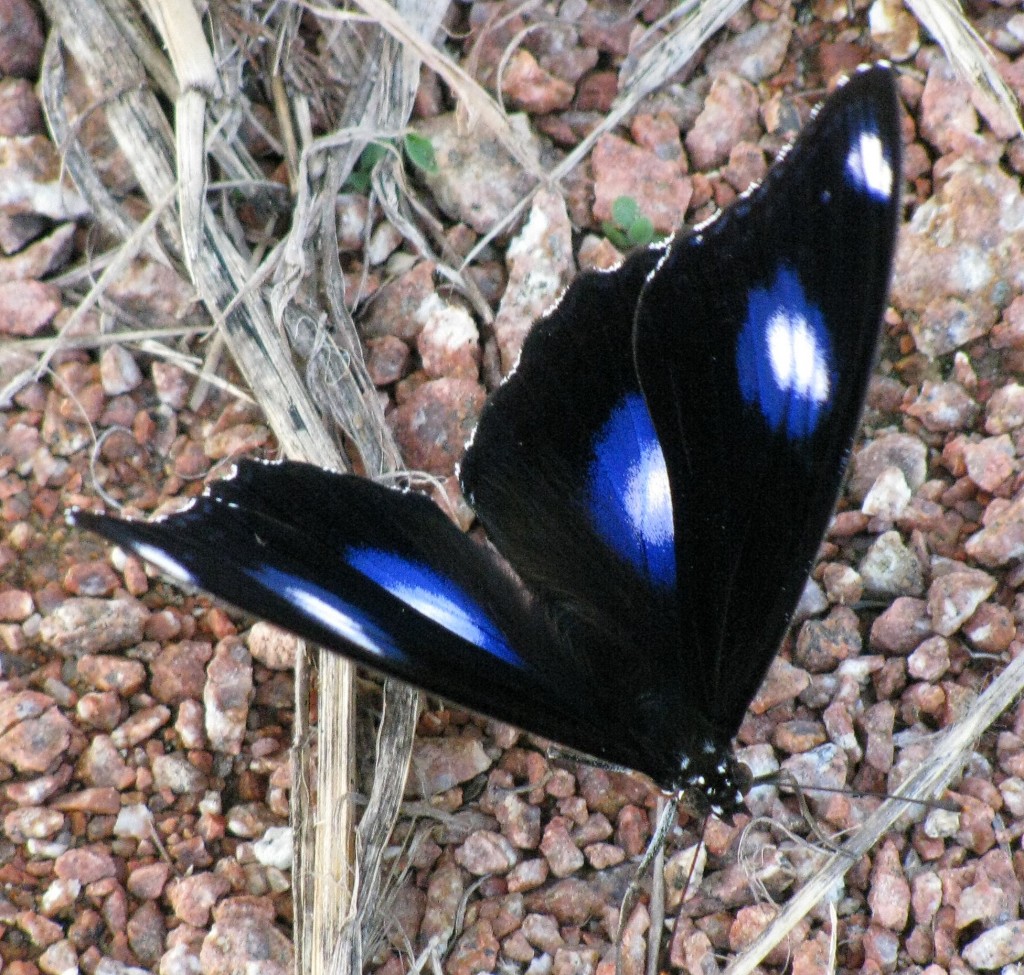
Male Varied Eggfly with Wings Open (© Magi Nams)
Today’s birds: masked lapwings, rainbow bee-eaters, pheasant coucal, peaceful doves, rainbow lorikeets, blue-winged kookaburra, black kite, magpie-larks, spangled drongo, great bowerbirds, royal spoonbills, blue-faced honeyeater. Also chocolate argus, varied eggfly, clear-winged swallowtail, and grass-yellow butterflies.
References:
1. City of Townsville City Update. Bird watching haven grows in popularity. April/May 2010. p. 10.
2. Michael F. Braby. The Complete Field Guide to Butterflies of Australia. 2004. CSIRO Publishing, Collingwood, Victoria. pp. 182-183, 186-187.

